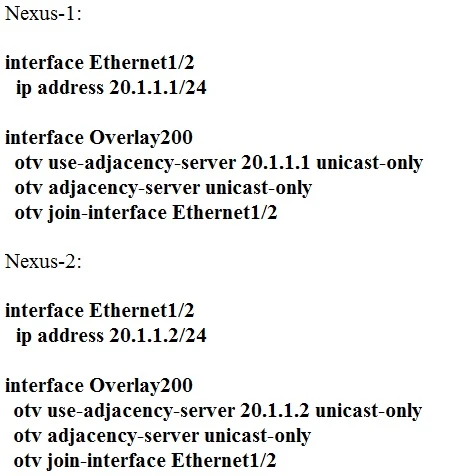
Which statement about the default gateway configuration of the vPC is true?

In a Virtual Port Channel (vPC) setup, both switches can act as the active default gateway due to the peer-gateway feature. This feature allows a vPC peer device to handle packets addressed to the router MAC address of its peer, enabling local forwarding of such packets without needing to traverse the vPC peer link. This ensures that either switch can forward traffic destined for the default gateway, thereby enhancing redundancy and load distribution.

The HA (High Availability) status being 'NOT READY' indicates that the fabric interconnects are not functioning in a fully redundant mode. To clear this status, the Layer 1-Layer 2 ports need to be connected. These connections are necessary for establishing communication between the two fabric interconnects, ensuring HA functionality by providing a path for heartbeat signals and synchronization. Without these connections, HA cannot be achieved, and the status will remain 'NOT READY'.
In an OSPF network, when the remote office connects to a regional hub site via a Not-So-Stubby Area (NSSA) with an Autonomous System Boundary Router (ASBR), the ASBR will generate a Type 7 LSA (Link-State Advertisement). The Type 7 LSA is unique to NSSAs and is used to advertise external routes within the NSSA. This LSA is then translated to a Type 5 LSA by the Area Border Router (ABR) when it needs to be propagated to other areas. Hence, the correct answer is Type 7 LSA.




The question asks which OTV edge device configuration allows two OTV edge devices located in the same site to bring up the dual-site adjacency. According to the correct setup for OTV, the primary edge device should have the 'otv adjacency-server unicast-only' configuration, while the secondary device should be configured to use the primary's adjacency server with 'otv use-adjacency-server

In a vPC (Virtual Port Channel) setup, enabling the 'peer-switch' feature allows both Nexus switches to function together as a single STP (Spanning Tree Protocol) root in the Layer 2 topology. This means that despite having two physical switches, they are presented to the network as one logical STP root switch. In the provided configuration, both N7K-1 and N7K-2 have the 'peer-switch' feature enabled, which confirms that they will appear as a single STP root.